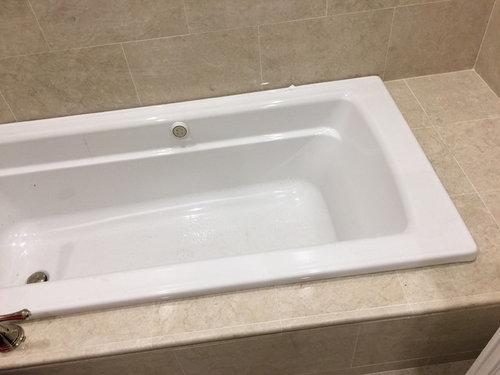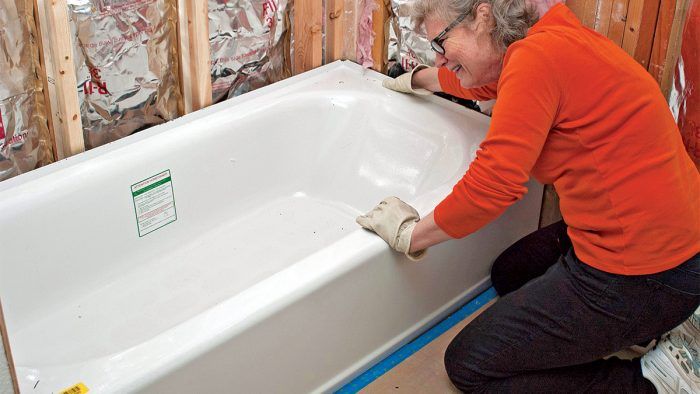Each person is bound to have their private notions involving How to Install a Bathtub.

Mounting a bathtub isn't exactly rocket science, however it does call for strong plumbing, woodworking, and in some cases, tiling abilities. Replacing an old tub with a brand-new one is also a moderately hard task. If the old tub is easily easily accessible, the job can relocate speedily; if you have to open a wall to eliminate the old bathtub and also place the brand-new bath tub, the task is much harder. In either instance, the project is within a home handyman's skills, although you will need a helper to move out the old tub as well as set in the brand-new one. Make certain you have actually certified on your own for the work and also fit trying it. As opposed to hiring a professional to take over a halfway-completed project, it is better to think about employing one prior to you start. Opportunities are you might require an expert plumber to make tube connections.
This short article will assist you set up a new bathtub in your restroom if you have actually currently gotten a new tub and do not require to transform the setup of your previous water pipelines.
Your tools as well as material checklist should comprise the following:
Planning for the Setup
Firstly, the sustaining structure provided with the bath should be fitted (if required) according to the supplier's guidelines. Next off, fit the taps or mixer to the bathtub. When suitable the faucet block, it is important to make sure that if the faucet features a plastic washer, it is fitted in between the bathroom as well as the taps. On a plastic bathroom, it is likewise practical to fit a supporting plate under the faucets system to prevent pressure on the tub.
Fit the versatile tap adapters to the bottom of the two taps making use of 2 nuts and also olives (in some cases supplied with the bathtub). Fit the plug-hole outlet by smearing mastic filler round the sink electrical outlet opening, and after that pass the electrical outlet with the hole in the bathroom. Utilize the nut supplied by the supplier to fit the plug-hole. Analyze the plug-hole electrical outlet for an inlet on the side for the overflow pipe.
Next off, fit the end of the flexible overflow pipeline to the overflow outlet. Afterwards, screw the pipeline to the overflow face which should be fitted inside the bathroom. Ensure you use every one of the provided washers.
Attach the trap to the bottom of the waste outlet on the tub by winding the thread of the waste electrical outlet with silicone mastic or PTFE tape, and screw on the catch to the electrical outlet. Link all-time low of the overflow tube in a comparable manner.The bath must currently be ready to be suited its final placement.
Removing Old Taps
If you require to replace old faucets with new ones as a part of your installment, then the first thing you need to do is detach the water. After doing so, switch on the faucets to drain any kind of water remaining in the system. The procedure of removing the existing taps can be quite troublesome due to the restricted accessibility that is commonly the instance.
Use a container wrench (crowsfoot spanner) or a faucet tool to reverse the nut that connects the supply pipes to the faucets. Have a cloth prepared for the remaining water that will originate from the pipes. When the supply pipelines have been eliminated, make use of the same tool to loosen up the nut that holds the faucets onto the bath/basin. You will need to quit the single taps from transforming during this procedure. Once the faucets have been eliminated, the holes in the bath/basin will have to be cleansed of any old securing compound.
Prior to going on to fit the new faucets, contrast the pipe links on the old faucets to the new faucets. If the old faucets are longer than the new taps, after that a shank adapter is required for the new taps to fit.
Mounting the Bathtub
Utilizing both wooden boards under its feet, put the bath tub in the required setting. The wood boards are useful in equally spreading out the weight of the bathtub over the location of the boards as opposed to focusing all the weight onto four tiny factors.
The following goal is to guarantee that the bath tub is leveled all round. This can be achieved by checking the spirit level as well as changing the feet on the tub up until the level checks out degree.
To mount faucets, fit all-time low of the furthest flexible tap connector to the suitable supply pipe by making a compression sign up with; after that do the exact same for the various other faucet.
Activate the supply of water as well as inspect all joints as well as brand-new pipework for leaks and tighten them if required. Load the bathtub and likewise inspect the overflow electrical outlet and also the regular outlet for leaks.
Finally, repair the bath paneling as explained in the supplier's user's manual. Tiling and also sealing around the tub must wait up until the bath tub has actually been made use of at the very least when as this will certainly resolve it right into its last placement.
Suitable New Touches
If the tails of the brand-new faucets are plastic, after that you will certainly require a plastic adapter to stop damages to the string. One end of the adapter fits on the plastic tail of the faucet and also the various other end gives a connection to the existent supply pipes.
If you need to fit a monobloc, then you will require reducing couplers, which connects the 10mm pipe of the monobloc to the common 15mm supply pipeline.
Next, position the faucet in the mounting hole in the bath/basin making sure that the washing machines are in area between the tap and also the sink. Protect the faucet in place with the maker supplied backnut. Once the faucet is firmly in place, the supply pipelines can be attached to the tails of the taps. The taps can either be attached by utilizing corrugated copper piping or with typical faucet ports. The former kind must be connected to the faucet ends initially, tightening up only by hand. The supply pipelines can later be connected to the various other end. Tighten both ends with a spanner after both ends have actually been connected.
Tiling Around the Bath tub
In the location where the bath fulfills the ceramic tile, it is required to seal the accompanies a silicone rubber caulking. This is very important as the fitting can relocate enough to split a stiff seal, creating the water to permeate the wall in between the bath and the tiling, bring about problems with moisture and also possible leakages to the ceiling below.
You can pick from a variety of coloured sealers to blend in your components and installations. They are marketed in tubes and cartridges, and also are capable of securing gaps as much as a width of 3mm (1/8 inch). If you have a bigger void to fill up, you can load it with twists of drenched newspaper or soft rope. Remember to constantly fill the tub with water before securing, to allow for the motion experienced when the tub remains in usage. The sealant can split fairly very early if you do not take into account this motion prior to sealing.
Additionally, ceramic coving or quadrant tiles can be utilized to border the bathroom or shower tray. Plastic strips of coving, which are easy to use as well as reduce to dimension, are also conveniently available on the market. It is recommended to fit the ceramic tiles making use of waterproof or water-proof adhesive as well as cement.
Bathtub Installation
How Important Is A Bathtub To Your Home?
High-quality baths, showers, and other bathroom updates are necessary when considering a smart investment in your home. It’s a room that you go to every day and one that is constantly being used by guests.The bathroom is one of the top trafficked rooms in a home and also one of the most valuable in terms of home resale.
Install Piping Before Tub
You will be using your existing drain and waste vent system, but pipes required include the hot and cold water supply lines and a pipe leading to a shower head. A mixing valve and shower head are also needed. Air chambers may be required.
Position the Tub
Lower the tub into place so that the continuous flange fits against the wall studs and rests on 1’x4' or 2’x4' supports. Anchor the tub to the enclosure with nails or screws inserted through the flanges into the studs.
NOTE: Remember, bathtubs and shower stalls may require support framing. A bathtub filled with water is extremely heavy, so check building codes and framing support before installing the tub.
Assemble Drain Connections
Assemble the bathtub drain connections by connecting the tub overflow with the tub drain above the trap, not beyond it. The trap will have a compression fitting that screws over the arm of the overflow assembly.
Place a Pipe For the Shower Head
First, locate a brass female threaded winged fitting and attach it to a framing support via a screw or a nail. Then run a pipe up the wall for the shower head. Sweat or solder the other side of the brass fitting to the top of the pipe.
Attaching Hot and Cold Water Lines
Attach your water lines for both hot and cold by sweating these directly into the hot and cold ports of the mixing valve. The mixing valve will be how water enters the tub’s system, not by the pipes themselves.
Install the Spout
Extend a piece of 1/2 inch pipe, or whichever length is specified in the manufacturer’s instructions, for the tub spout. Sweat on a male threaded fitting at the end of the pipe or use a brass nipple of the proper length and a 1/2 inch cap.
NOTE: At this point you should have your rough-in plumbing work inspected before proceeding further.
Check For Leaks
Restore the water pressure and check the drain connection and the supply pipes for any sign of leaking.
estore the Bathroom Wall
Replace the wall with moisture-resistant drywall as a base for your wall covering. Seal the joints between the wall and your new tub with silicone caulk as protection against water seepage.
https://www.berkeys.com/2016/12/02/bathtub-installation-dallas/

I am very taken with How to Install a Bathtub Yourself and I hope you appreciated our piece. Are you aware of another person who is looking into the subject? Take a moment to share it. Thanks for your time invested reading it.
Book